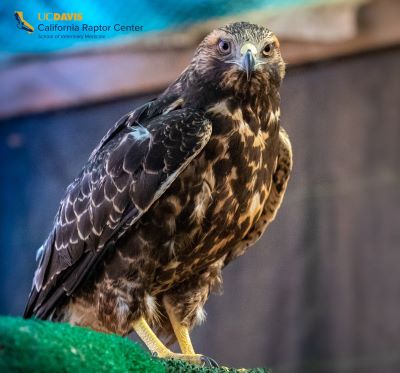
There are over 30 bird of prey species (raptors) in California. This group of birds consists of eagles, falcons, hawks, harriers, kites, and owls. Raptors are protected under the Migratory Bird Treaty Act, in addition to other federal and state laws and regulations.
Some raptors are predators and hunt live prey, such as mice and rabbits. Other raptor species are scavengers with a diverse diet including dead, sick or injured animals. Raptors provide significant ecosystem benefits including helping control rodent populations. Raptors may cause concerns due to property damage when hunting or nesting or as a health hazard due to sick or dead birds (disease outbreak). Some raptors may be seen along roads looking for roadkill and may be at risk of injury due to vehicles.
Prevent Potential Conflicts
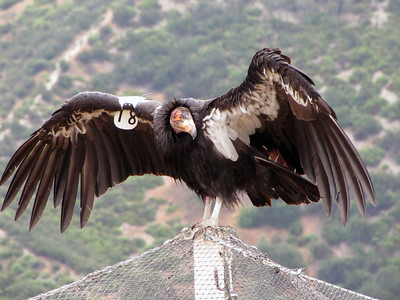
California is home to two species of vultures, the turkey vulture (Cathartes aura) and the endangered California condor (Gymnogyps californianus). Vultures are scavengers that primarily eat dead animals. They lack sharp talons (claws) and do not usually consume live prey. These birds have strong beaks for tearing into food, as well as excellent eyesight and sense of smell that they use while searching of food. Both species are protected under the Migratory Bird Treaty Act, in addition to other federal and state laws.
Vultures provide significant ecosystem benefits by consuming deceased and roadkill animals. They are highly social, curious, and form strong bonds. Vultures may cause concerns due to property damage or health hazard when gathering in large roosts (communal perching areas).
Prevent Potential Conflicts
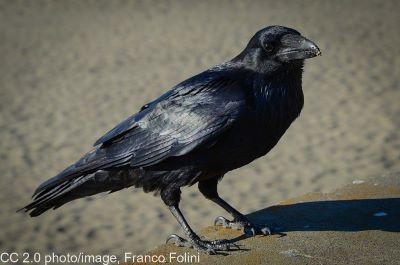
California is home to the American crow (Corvus brachyrhynchos) and common raven (Corvus corax), commonly referred to as corvids. They are protected under the Migratory Bird Treaty Act and can be found in diverse habitats statewide. Ravens are much larger than crows and may travel in pairs, while crows are smaller and flock in large groups (known as a “murder”).
Crows and ravens are scavengers and can eat almost anything including seeds, dead or injured animals, and other birds. They provide many ecosystem benefits in this role. When gathering in large groups, crows may cause concern due to property damage or as a health hazard. Mosquitoes can transmit West Nile virus (WNV) to crows. Crows cannot transmit WNV to humans.
Prevent Potential Conflicts
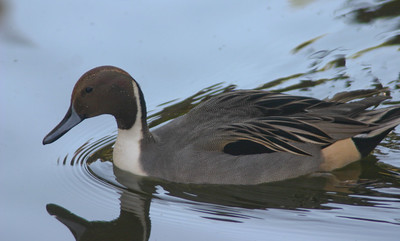
California provides important habitat each year for millions of migratory waterfowl to feed, shelter, and nest along the Pacific Flyway (migration path). Canada Geese (Branta canadensis) and mallard ducks (Anas platyrhynchos) are some of the most commonly seen waterfowl. Waterfowl are protected under the Migratory Bird Treaty Act, in addition to other federal and state laws and regulations.
Waterfowl provide many ecosystem benefits including as nutrient and seed dispersers. They can be migratory or year-round residents. Large resident flocks may cause concern due to property damage, health hazard, and water quality concerns.
Prevent Potential Conflicts
There are more than 15 species of gulls in California, including the California gull (Larus californicus), ring-billed gull (Larus delawarensis), and Western gull (Larus occidentalis). They are social birds with a diverse diet, including insects, fish, rodents, and eggs. Gulls are commonly referred to as “seagulls”, though they do not only live near bodies of water. Gulls are protected under the Migratory Bird Treaty Act.
There are two species of pelicans commonly found in California: American white pelican (Pelecanus erythrorhynchos), California brown pelican (Pelecanus occidentalis). These unique birds can be seen along California's coasts and inland on lakes or rivers.
Seabirds provide many ecosystem services and are an important part of the natural food chain. Many seabirds have learned to exploit resources in human-modified areas. Potential conflict may occur due to potential property damage, human health or safety concerns, animal welfare (e.g., fishing line injuries, entanglement), and water quality issues.
Prevent Potential Conflicts
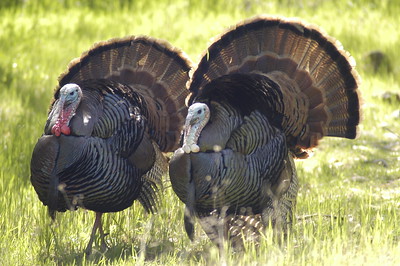
Wild turkeys (Meleagris gallopavo) are a non-native game bird that were introduced to California in 1877. There are five subspecies of wild turkey distributed throughout the state. Male turkeys, or “gobblers", have a "beard" of modified feathers on their neck and sharp spurs on their legs for fighting other males - both of which are used to impress female turkeys, or “hens”.
Wild Turkeys eat leaves, grasses, fruits, berries, and seeds, in addition to insects. Turkeys may cause concern due to crop damage and other property damage. Do not feed wild turkeys or other wildlife. Pick ripe fruit off trees, and promptly collect any fruit that falls. During the mating season, male turkeys can become territorial or aggressive.
Prevent Potential Conflicts
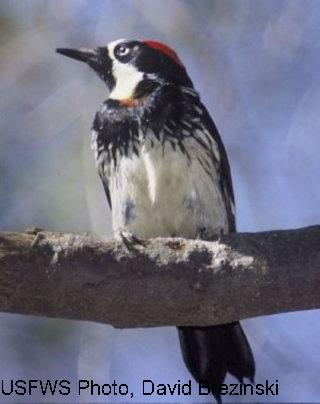
There are 17 woodpecker species found in California, including the acorn woodpecker (Melanerpes formicivorus), the glided northern flicker (Colaptes auratus chrysoide), and gila woodpecker (Melanerpes uropygialis). Woodpeckers are protected under the Migratory Bird Treaty Act. Two species are listed as endangered under the California Endangered Species Act.
Woodpeckers provide many ecosystem benefits that include controlling insect populations, dispersing seeds, and creating shelter for other species. A woodpecker diet is diverse and may include insects, acorns, nuts, seeds, berries, and sap. Woodpeckers may cause concern due to property damage or noise disturbance as they build nests, search for food, or use surfaces to “drum” (social display).
Prevent Potential Conflicts